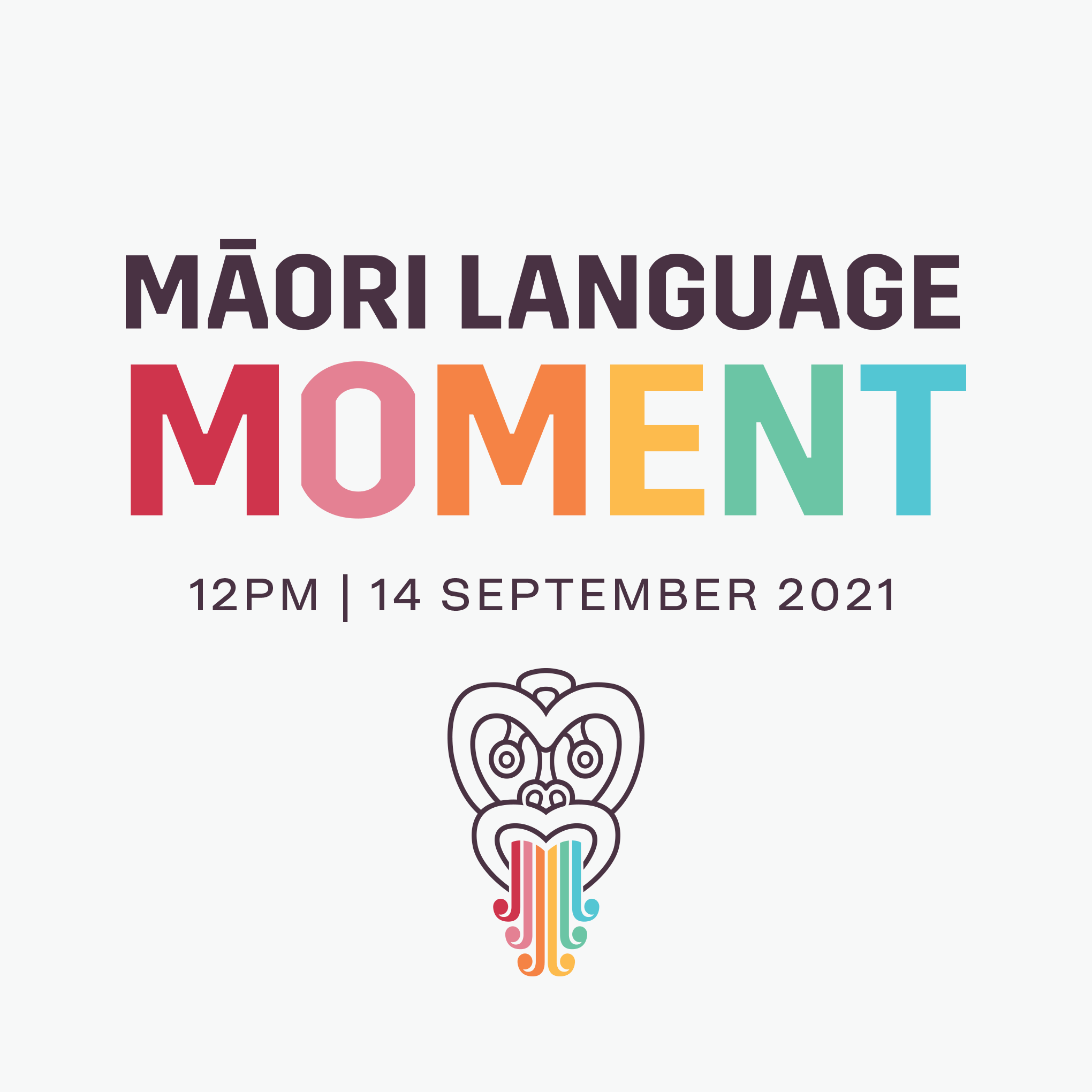Ko te reo te mauri o te mana Māori
The language is the heart and soul of the mana of Māoridom
Māori Language Moment (https://www.reoMāori.co.nz/) on the 14th of Mahuru (September) is only one of the activities to help promote and strengthen te reo Māori. But why would we want to do this? Isn’t Māori a dead language and one that is not really useful?
There is a large body of accepted research showing the benefits for speaking two or more languages, even if that language is only used in a specific place. But this article is not about the individual benefits of speaking te reo Māori nor to argue about te re Māori being a dead language when it is one that is being revitalised. Instead, we argue that it is important for everyone to support and embrace te reo Māori. And to do this we need a bit of a history lesson.
Te reo Māori is the first language of Aoteaora. It is the ancestral language of Māori as tangata whenua and is ingrained in Te Ao Māori (the Māori world) and Māori identity. It is also unique to Aoteaora.
When settlers arrived in Aotearoa, many learnt te reo Māori to be able to integrate with Māori hapu, to trade with Māori, to become husbands to wāhine (women) and to become fathers to tamariki (children) who were raised bilingual. Many officials spoke te reo Māori and te reo Pākehā (English). Likewise, Māori began to learn English to help facilitate trade and relationships.
Over time, the largely oral history of Māori began to be written down and Māori newspapers were published (the first being in 1942). It wasn’t until the 1850s that te reo Māori became the minority language in Aotearoa as the population of settlers overtook Māori. In 1867 the Native Schools Act was passed and legalised that English be the only language used in the education of Māori tamariki. Prior to this, schooling had been conducted in te reo Māori and English. This meant that children were actively punished for speaking te reo Māori at school. Despite this, this was a time where the Māori language was still flourishing alongside English, and a good proportion of people living in New Zealand were bilingual. Against the odds, 90% of Māori school children spoke te reo Māori as their primary language in 1913 showing strength and pride in the language.
The shift in schooling to English perhaps prefaced what was to come in the 20th century. The loss of young men (sometimes all of the young men in whānau) to the war and the shift to only English speaking in schools began to weaken the Māori language as fewer people began to speak te reo Māori. Increasing migration to cities where English was the primary spoken language also contributed to this. Speaking te reo Māori began to be discouraged as being “successful” meant being able to survive in an English speaking world. This resulted in a decline in te reo Māori between the 1920s to the 1960s.
Spotting this decline early, Sir Āpirana Ngata attempted to mobilise Māori communities to help promote the speaking of te reo Māori in the home, whilst also supporting English in schools. In the 1960s parents were further encouraged by the government to speak English at home in order to better prepare their children for success at school, further contributing to the decline in te reo Māori. Māori became a language that was for the older generations with English being the language of “success” in the colonised world.
In 1972, due to concerns raised by a number of Māori urban groups, a Māori language petition was presented to Parliament with 30,000 signatories asking for the active recognition of te reo Māori. From here there was a relative explosion of te reo Māori initiatives including several iwi (Ngāti Raukawa, NgātiToa and Te Āti Awa) initiating strategies to enhance Māori language, Rūātoki School becoming the first bilingual school in Aotearoa (1978), the Te Ātaarangi movement to help restore Māori language knowledge to Māori adults, the establishment of Te Upoko o te Ika and Radio Ngāti Porou (1980s), Te Wānanga o Ruakawa (1981), the development of Kōhunga Reo movement (1982), and Kura Kaupapa Māori (1985).
In 1987, the Māori Language Act was passed in recognition that te re Māoi is a taonga (treasure) that needed to be protected and cherished. The passing of the act made te reo Māori an official language of Aotearoa (one of two; the other being sign language, note NOT English) and allowed speakers of te reo Māori the right to use te reo Māori in legal settings. The act also helped to establish a commission that helps to protect and promote the language. Since then, we have seen a growth in Māori language initiatives and strategies that have helped contribute to the revitalisation of te reo Māori (with a growth in the number of te reo Māori speakers in the last two censuses. But the success depends on the people of Aoteaora getting behind these initiatives and we have been warned that we are still at risk of losing te reo Māori.
As tangata tiriti (people of the treaty), our support of the taonga that is te reo Māori is important. By supporting te reo Māori, learning to speak the language, and valuing te reo Māori, we are supporting the revitalisation and widespread acceptance of te reo Māori. In doing so, we are also committing to do better and do more, and recognising the impact that colonisation and the loss of language. Importantly, this small step can also help to support Māori aspirations of tino rangatiratanga. Whilst it may seem a big jump from accepting te reo Māori to supporting tino rangatiratanga, it is. Valuing te reo Māori and supporting the revitalisation of te reo Māori helps drive interest and funding and support for Kohunga Reo and Kura Kaupapa; for language courses. These programmes do not teach te reo Māori in isolation but help connect Māori as tangata whenua to te Ao Māori, strengthen speakers’ identities as Māori and increase and uplift the voice of Māori. Therefore strengthening Māori as a people.
So yes, we should all care about and strive to learn te reo Māori and the kaupapa behind it.
Ki te kotahi te kakaho ka whati, Ki te kapuia e kore e whati
Alone we can be broken. Standing together, we are invincible
![]()
- Dr Liesje Donkin
Workplace Wellbeing Lead

